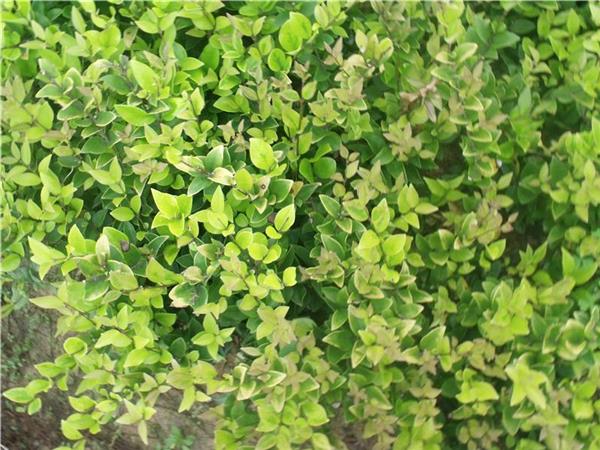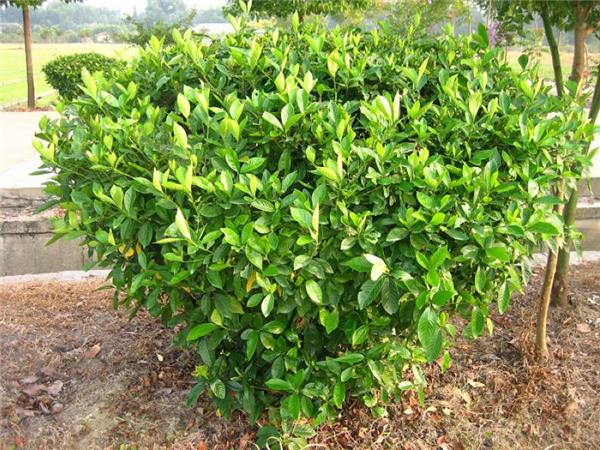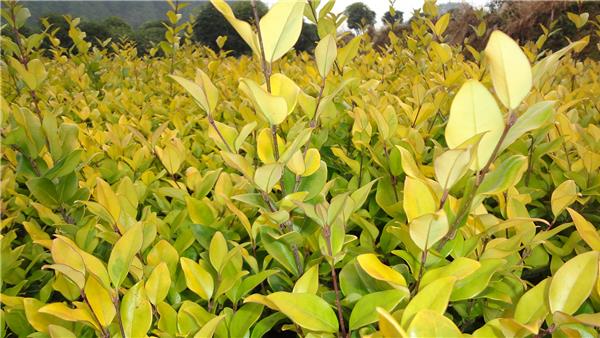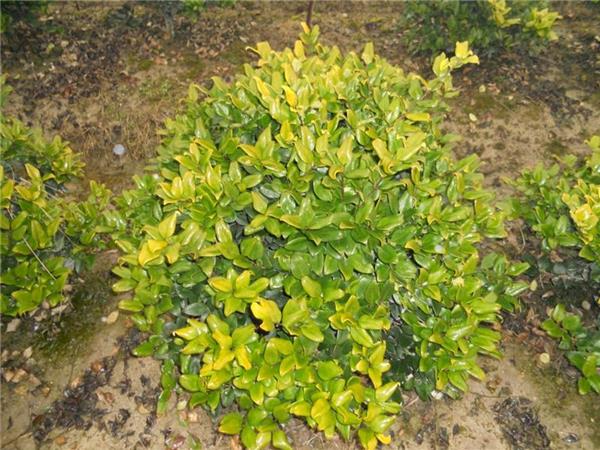The insertion technology of Jinsen privet and the management matters after insertion
Ligustrum lucidum is named because its leaves are golden yellow or yellowish green, and its reproduction usually uses the way of cutting, which has good cost and survival rate, and is a cost-effective way of reproduction.

The insertion technique of Jinsen privet
Cutting time: it should be carried out when the new shoots grow slowly, that is, from May to October, preferably during the rainy season.
Land selection and land preparation: it is appropriate to choose land with loose and fertile land, flat terrain and good drainage, applying 125 kg calcium superphosphate per mu, turning 15 meters deep and then fine raking flat to make a high border 1.2 meters wide and 20 meters deep.
Cutting cuttings: first of all, choose the mother tree. Cuttings should be collected from young mother branches, preferably semi-lignified branches of the same year. The best harvest time should be from May to June and from September to October.
Cuttings: a single bud should generally be inserted into 1/2 of the length of the branch, not too deep; the density is that the cuttings do not squeeze each other, and the base of the cuttings can be seen from above.
Insert bamboo arch and cover film: when inserting bamboo arch, a "×" bamboo arch should be inserted at both ends of the seedling bed to support the film, with a height of 0.7 m ~ 1.0 m, and the spacing of each arch should be 0.8 m. Generally, a disposable drip-free film with a width of 3 meters is used, and finally the surrounding of the film is completely sealed with soil or river sand.

The management after the insertion of Jinsen privet.
Humidity: after 20 days of insertion, the air humidity in the small arch shed should be kept above 95%. If the humidity in the small arch shed is low, the film should be lifted and watered in time, combined with 200-fold water-soluble fertilizer (20mur10Mel 20 and 14Mel 14) alternately, and 500 times of carbendazim + anthrax magnesium should be sprayed on the leaf surface and sealed. Water once a week from May to June and once every 10 to 15 days in September. Usually check the plug-in media once every 2 to 3 days. Under normal circumstances, watering, fertilizing and pest prevention should be completed at the same time.
Temperature: the temperature in the greenhouse should be controlled below 36 ℃ and above 15 ℃. The optimum temperature is 25 ℃. If the temperature is too high, shading or watering on the small bamboo arch film is needed to cool the temperature. If the temperature is too low, it is necessary to cover the film or other heating measures (such as adding ground hotline, etc.).
Light control and seedling refinement: light can promote cuttings to take root and strengthen seedlings. In general, Jinsen privet begins to take root in about 15 days, and seedlings can basically be refined in about 40 days. From May to June, the shade net is usually covered at about 10:00 in the morning, and the shade net is gathered up after 3: 00 pm. The seedlings can be boiled in about 20 days. The rooting rate can reach more than 90%.

Pest control of Ligustrum lucidum
Disease: the primary disease is the most serious disease, because more sources of infection, easy to attack in a large area, we must pay enough attention to it. Reasonable density is a useful measure to avoid diseases. The average density per mu should not exceed 40,000 pots. Too high density will often lead to a burst of diseases. The outbreak of the disease is the most serious from June to September, so we should pay attention to the key prevention and control from May to June. Three file ketone, Shigao, chlorothalonil and DuPont Fuxing can be used in turn, once every 10-15 days and 3-5 times. When controlling, you can participate in 0.2% water-soluble fertilizer or trace element fertilizer, stop topdressing and supplement trace elements, and strengthen the disease resistance of the plant.
Insect pests: grubs, Dishanjun and other root-eating pests are the most serious, and the attack period is from July to September. Control methods immediately remove weeds around and in the basin. For areas with serious risks, irrigate roots with 800 times phoxim. When irrigating roots, pay attention to avoid the high temperature period and adhere to the humidity in the basin, so as to prevent drug damage.

Any diseases and insect pests are a great damage to plants, which will not only make them lose their original ornamental value, but also make them fall leaves and die ahead of time, so we must prevent and control diseases and insect pests in the course of conservation. to give priority to prevention and the combination of prevention and control.
Related
- Wuhan Hospital Iron Tree Blooming Result Was Instantly Frightened by the Gardener Master
- Which variety of camellia is the most fragrant and best? Which one do you like best?
- What is the small blue coat, the breeding methods and matters needing attention of the succulent plant
- Dormancy time and maintenance management of succulent plants during dormancy
- Minas succulent how to raise, Minas succulent plant pictures
- What are the varieties of winter succulent plants
- How to raise succulent plants in twelve rolls? let's take a look at some experience of breeding twelve rolls.
- Attention should be paid to water control for succulent plants during dormant period (winter and summer)
- Watering experience of twelve rolls of succulent plants
- Techniques for fertilizing succulent plants. An article will let you know how to fertilize succulent plants.



